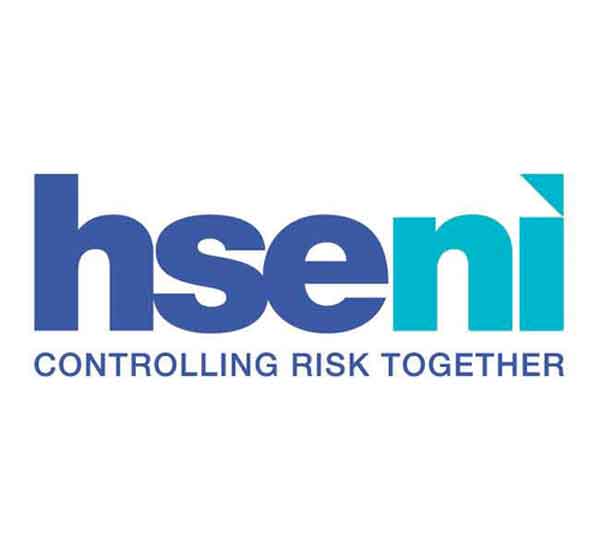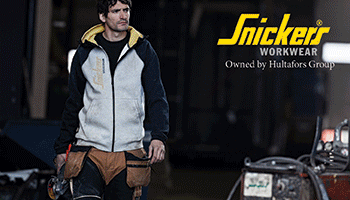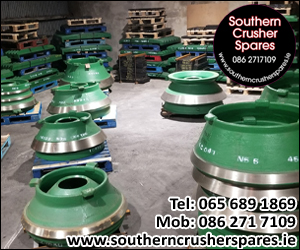The Health and Safety Executive for Northern Ireland (HSENI) is reminding the construction industry about the importance of internal fall protection when working at heights.
Falls from height remain one of the biggest causes of death, disability and injury in construction and are of great concern to HSENI.
Many contractors have got to grips with external fall protections and safe work platforms, such as perimeter scaffolding and MEWPS. However, some don't realise the need for internal fall protection during work at height, such as:
• stripping and dismantling roofs
• refurbishing roofs
• installing joists or roof trusses
• fixing battens or tile supports and roof tiles
• installing concrete floor slabs or stairs
• working near or over fragile surfaces
• working adjacent to voids in the floor
The Work at Height Regulations (NI) 2005 set out a hierarchy of fall protection measures to be taken when planning or carrying out work at height, including work internal to the building, as follows:
• avoid work at height
• use work equipment or other measures to prevent falls
• use work equipment or other measures to minimise the distances and consequences of a fall should one occur
This hierarchy has to be followed systematically, and only when one level is not reasonably practicable may the next level down be considered.
Types of internal fall protection include:
• proprietary decking systems
• birdcage scaffold
• safety trellis (extendable aluminium trellis)
• boarding out the inside of the roof using timber
• inserting air bags/bean bags as soft landing systems
Safety nets are useful - so long as there is adequate clearance below and anchorage points which have been assessed by a competent person prior to the nets being installed.
Harnesses should be the last option considered, and only used by workers who have been trained in their use and the use planned by someone competent to take into account:
• the circumstances
• strength and location of available anchor points
• type/length of lanyard
• suspension height and obstacles
• means of rescue
Internal voids
It is often necessary to create internal voids in buildings under construction or find existing ones in buildings being refurbished.
Planning ahead to anticipate when these voids will constitute a risk to workers is essential.
Key things to consider include using mesh guards or covers which are permanently fixed into concrete floors – these provide protection to all workers throughout the job.
Where coverings on the floor are used these must be robust, securely fixed and signed.
You can protect voids from underneath by using fixed scaffold.
If you carry out short duration works around the void, you should provide protection, for example, scaffold underneath.
Fragile materials
Falls through fragile materials are a particular problem in both the roof construction and building maintenance sectors.
If possible, arrange the job to avoid working or passing near fragile material. If this is unavoidable, you should identify all fragile materials and put safety precautions in place.
Some fragile roof materials may give a false sense of security to those who are working on them or passing by them. They may be capable of carrying some distributed load, giving the impression that they can bear a person’s weight, but they might not carry a concentrated load such as the heel of someone walking, or a person stumbling and falling.
It is still a common but fatal belief that it is safe to walk along the line of roof bolts above a purlin, but this is like walking a tightrope, where one false step or loss of balance can lead to disaster.
Planning is vital to ensure safety before the work begins, so that it can be carried out safely, efficiently and without undue delay. The client must make sure that the individual or company is competent to do the work, whether this is carrying out the construction work or installing the safety measures.
When developing the construction phase health and safety plan, the principal contractor should include the safety measures required where there is work at height.
Time and date
CONSTRUCTION DIRECTORY
Construction News
21/03/2016
Construction Industry Needs To Look At Internal Fall Protection - HSENI

Latest Construction News
07/05/2024
Wind Energy Ireland's monthly report has revealed that wind power generation was the second highest on record for an April month. Recent data reveals that in April 2024, Irish wind farms produced 1,076 gigawatt-hours (GWh) of electricity, marginally lower than the previous record of 1,112 GWh set ...
07/05/2024
GRAHAM has scooped 14 awards at this year's Considerate Constructors Scheme (CCS) National Site Awards. Since 1998, the CCS has been honouring the UK's most considerate sites. Its National Site Awards recognise the efforts that constructors have made to drive a positive change in the construction ...
07/05/2024
Irwin M&E has been appointed to Pagabo's Healthcare Decarbonisation framework and Public Sector Decarbonisation framework. This represents a significant achievement and a testament to the company's ongoing commitment to sustainability within the construction sector. These framework appointments ...
07/05/2024
Henry Brothers has been honoured with a King's Award for Enterprise for Sustainable Development. As one of only two Northern Irish businesses to have been recognised in the Sustainable Development category in 2024, Henry Brothers was recognised for its approach which has resulted in significant ...
07/05/2024
The Government has published the draft South Coast Designated Maritime Area Plan (DMAP), identifying four proposed areas off the south coast for offshore wind projects over the next decade. South Coast DMAP is Ireland's first ever spatial plan for renewable energy six-week public consultation on ...
07/05/2024
Minister for Transport, Eamon Ryan, has launched a public consultation on the development of an updated National Policy Framework for Alternative Fuels Infrastructure in Transport. This consultation comes after the adoption of Regulation (EU) 2023/1804 on the deployment of alternative fuels ...
07/05/2024
Farrans has congratulated its six relay teams which took part in the Belfast Marathon at the weekend, raising over £3,000 for NI Hospice. The Moy Park Belfast City Marathon is one of the leading marathons in the UK and Ireland and is an AIMS certified race. The race started at Stormont and ...
07/05/2024
Kildare County Council has issued a further update on the works at the Kerdiffstown Park Development. The majority of the remediation tasks were finished ahead of schedule by the close of 2023, with only a few remaining. The final assessment and testing of the landfill infrastructure are currently ...
07/05/2024
After 27 years since joining Phoenix Energy Holdings as Commercial Director in February 1997, Peter Dixon, the long-serving Chairman, has resigned from his position. Dixon began his career as a gas engineer in 1976, when he was 16 with the Gas Corporation in Liverpool before being fast tracked ...
07/05/2024
Fermanagh and Omagh District Council has hosted an event on Industrial Decarbonisation (ID) which is part of a series of engagements led by Invest Northern Ireland. Nearly 60 representatives from various local businesses across the council area participated in the fourth of a series of business ...

















